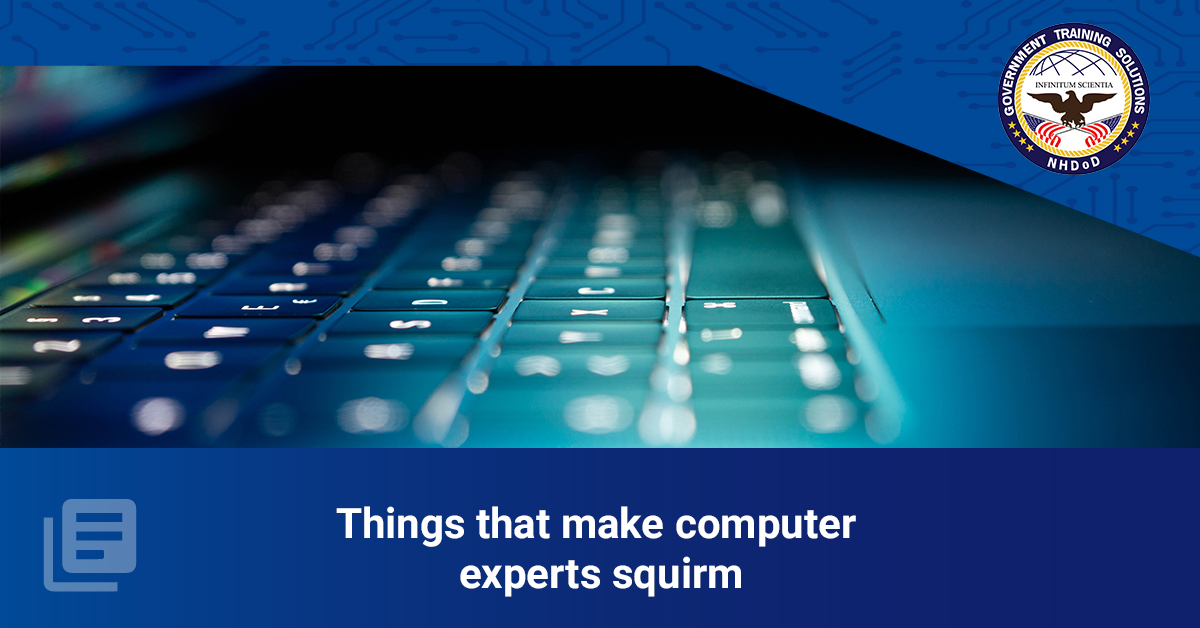
Things that make computer experts squirm
The Computer Worms
- Bandwidth is consumed and servers are overloaded that causes harm to the network.
- Also rather than spreading and destroying the network, codes are written inside the worm so that the systems are destroyed with these codes. These codes steal data or create backdoors so that other systems can control the system.
- The codes also called payloads to destroy the system in a way that the infected systems are used to spread spams and destroy the entire network.
- Computer worms need no assistance and also they replicate by themselves.
- The worms use the contacts of the infected system to send mails through which other systems are infected by opening those emails.
- Once the mail is opened, the worm is downloaded and it does its work for some time without any further actions.
- Only after the system is infected, the user will know about the worm.
- Computer worms need not be attached to any software. They spread to other systems by all means.
- Worms either modify or delete the files of the system thereby overloading the system and hence the network.
- The worm creates space for a hacker to enter the system and destroy the entire network.
- Computer worms destroy the data worth years and are very malicious. Protecting our data from worms is very important.
- Security features are mostly exploited by the worms.
- Some worms also try to change the system settings.
- Examples of worms include Morris Worm, Storm Worm, SQL Slammer and so on.
- Morris developed a few lines of code to know how vast the internet is but the codes had bugs that destroyed the host systems and caused damage worth millions.
- Storm worm, as the name suggests sends mails of a news report regarding the storm. Once opened the system is affected and other contacts are also sent emails. This worm was created in 2007. Many believe that the systems are still affected by this worm which the user does not know.
- SQL Slammer created many IP addresses that were not protected with any security. This worm affected many major websites and hence the vulnerabilities of the system were exposed.
- Automatic updates should be done for all the applications to avoid potential attacks from worms.
- Most worms are identified with the help of antiviruses but since many worms are created on a daily basis, some are not detected.
- Stuxnet is a famous computer worm that was intended to destroy Iran’s nuclear plans.
Overview of Computer Worms
Computer worms can be organized into types based on how they are distributed between computers. Types of worms are as follows:
- Email Worms: Email Worms spread through malicious email as an attachment or a link of a malicious website.
- Instant Messaging Worms: Instant Messaging Worms spread by sending links to the contact list of instant messaging applications such as Messenger, WhatsApp, Skype, etc.
- Internet Worms: Internet worm searches all available network resources using local operating system services and/or scans compromised computers over the Internet.
- IRC Worms: IRC Worms spread through Internet Relay Chat (IRC) chat channels, sending infected files or links to infected websites.
- File sharing Worms: File sharing Worms place a copy of them in a shared folder and distribute them via Peer To Peer network.
Types of Computer Worms
Computer worms are classified based on the way they are distributed in the systems. Some are explained below.
- Email Worms
The email box is used as a client by the worm. The mail has infected link or attachment which once opened downloads the worm. This worm searches the email contacts of the infected system and sends links so that those systems are also destroyed. These worms have double extensions like mp4 or video extensions so that the user believes it to be media extensions. These worms do not have a downloadable link but a short link to open the same. The link is clicked and the worm is downloaded, it either deletes the data or modifies the same and the network is destroyed. An example of an email worm is ILOVEYOU worm which infected computers.
- Internet Worms
Internet is used as a medium to search other machines vulnerable and affect them. Those systems where the antiviruses are not installed are affected easily with these worms. Once the machines are located they are infected and the same process is started all over again in those systems. This is used to check the recent updates and security measures if the system hasn’t installed any. The worm spreads through the internet or local area network connections. Read about ransomware here>>
- File-Sharing Network Worms
When a file from an unknown source is downloaded, the file may have worm which locates a shared folder and destroys other files. When another system downloads file from the same network, the worm locates that system as well and is replicated. And the process is repeated for all the systems in the network. These worms are media or other extensions and hence users can easily download the same thinking that they are an extension of the files. A worm ‘Phatbot’ infected computers through sharing files. This worm has stolen personal information such as credit card details and destroyed many systems on an unprecedented scale.
- Instant Message and Chat Room Worms
These worms work as email worms as the contacts from chat rooms are taken and messages are sent to those contacts. Once the contact accepts the invitation and opens the message or link, the system is infected. The worms have either links to open websites or attachments to download. These worms are not as effective as other worms. Users can destroy these worms by changing the password and deleting the messages.
It exploits the security holes of the software application and trying to access in order to damage sensitive information, corrupting files and installing software for remote access to the system.
How to Prevent Computer Worms
These are some preventive measures which can protect your computer, network, and safe from computer worms. The basic tips for how to prevent computer worms and virus are as follows:
- Install good Anti-virus Software
Antivirus software is the first preventive measure on how to prevent computer worms and virus. It is a program that helps protect your computer against viruses, worms, trojan horses, and malware. It scans every file to your computer and helps to prevent damage to your computer system.
Most of the people are using free anti-virus software or using the following windows security software, which are not bad but they are inefficient in safeguarding your computer.
You can use one of the following anti-virus software to prevent computer worms and virus and keep updated with latest version.
- Bitdefender
- Norton
- Kaspersky
- Panda
- ESET
- Avast
- AVG
- Don’t Download Suspicious Email Attachments
When you will receive an email with an attachment file from unknown source, which may be suspicious e-mail. The attachment file can contain malicious script, if you download and open the file then malware will execute and infect on your computer.
Tips
Don’t download the suspicious email attachments or documents to prevent from computer worms.
- Never Download Software from Unreliable Websites
Viruses are hidden in the files or programs and it will enter your computer whenever you download the software, apps and other content from unknown sites.
Cyber security expert recommended that download the applications and software’s only from trusted- sites but our common habit is that, we are downloading the software without checking the site is reliable or not.
Tips
So, don’t download the software from insecure websites because insecure sites contains malicious software to compromise your sensitive data.
- Keep All Software Updated
You have to ensure that your all used software is updated with latest version. The main purpose of downloading and installing the updated version software is stay protected from computer virus and worms.
Old version software may have security holes in source code and when a updated version of software is released, the new version usually includes fixes for those types of security vulnerabilities.
- Never Open Suspicious Email Attachments
Whenever you download the email attachment with extension .exe, vbs, shs, pif, cmd etc. so, there has a chance to infect virus on your computer. For your kind information, these types of extensions are never used in normal file attachments, but they are frequently used by viruses and worms.
Some other attachments may contain an executable code with double extension like hi.doc.exe or name.txt.vbs and if you open such types of files, then virus will infect into your system. So, it is better to check the file extension before you download and scan the attachment file.
- Regularly Backup your Important Files
A data backup is a process copying or archiving important data files and documents for the purpose of being able to restore data in case if your computer is infected with a virus or malware.
It is the easiest way to recover your data files from backup storage when data has been lost by a computer virus, worms or cyber threats.
Tips
You can take regular data back-up manually or automatically by archiving important documents to an external hard drive or your suitable place.
- Regular Scan your Computer
One of the easiest and best ways for how to prevent computer worms and virus is regularly scanning your computer with antivirus software. When you have installed anti-virus software, you should first scan your entire computer. If your installed anti-virus has the ability to automatically scan files or directories so, enable this feature with your suitable time. It is better complete a full scan every two weeks or a single full scan month. A full scan takes several hours, depending on how much data you have in your computer.
- Use a Firewall
A firewall is a security tools which is designed to monitors incoming and outgoing network traffic based on security rules and protects your system. Its main purpose is to create an obstacle between internal and external network in order to protect cyber threats.
If your computer ports are open, then a malicious script can be sent by an attacker and gain unauthorized access. A windows firewall can act as a simple defense by closing all ports.
In Windows operating system, this can be found by navigating to:
- First, Choose Start→ Control Panel→ System and Security→ Windows Firewall.
- Then, click the Turn Windows Firewall On or off link in the left pane of the window.
- Select the Turn on Windows Firewall radio button for one or both of the network locations.
- And Click OK.
You also can use a web application Firewall to protect your software application form cyber threats.
- Use SSL Certificate
Secure Sockets Layer (SSL) is a global standard web security protocol which creates a secure connection between a website and browser. SSL ensure that all data passed between a web server and browser remains encrypted and secure. This encryption technique prevents from hackers to stealing sensitive information such as credit card details, name and address.
In case, if a site is secure by SSL then a padlock is displayed, or the address bar shows the URL as HTTPS instead of HTTP.
- Avoid Unsolicited Email
If you receive e-mail advertisements or other unsolicited e-mail, so there can be a malicious script or link to infect into your computer. If you click on that link, then it will redirect to you a vulnerable website to steal your information.


